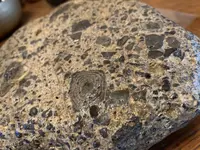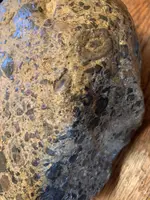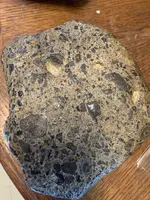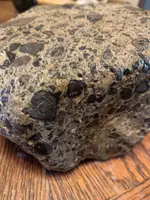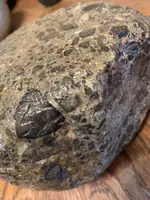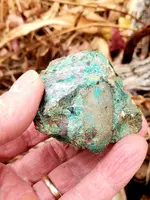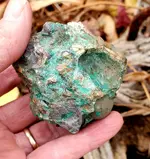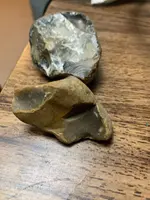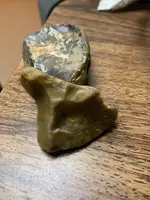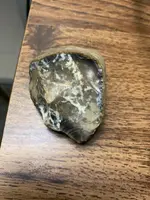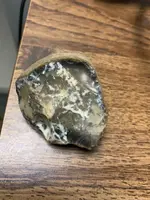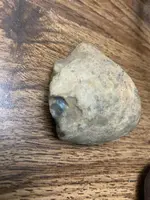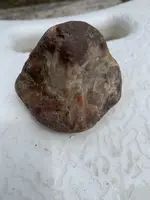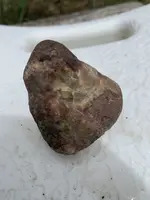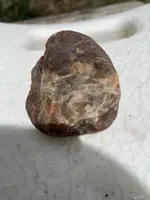Breccia? Weird layered pyramid shape design any ideas what that is?
You are using an out of date browser. It may not display this or other websites correctly.
You should upgrade or use an alternative browser.
You should upgrade or use an alternative browser.
🔎 UNIDENTIFIED Cool design in the breccia?
- Thread starter shimmi99
- Start date
Solution
Hi Shimmi99
Strictly speaking, that is a breccia and not a conglomerate. The geological difference is that conglomerates are exclusively sedimentary and the clasts within the matrix are largely rounded or sub-rounded. Breccias can be sedimentary, tectonic, landslide/collapse/impact-related or volcanic/igneous in origin and the clasts within the matrix are mainly angular.
That particular clast with the concentric rings is interesting. The most commonly seen mineral with that kind of structure is ‘beekite’, which is a form of microcrystalline quartz that most usually arises by silica replacement of carbonate minerals during fossilization… especially for things like corals.
Beekite can be pretty much any colour, but is usually...
Strictly speaking, that is a breccia and not a conglomerate. The geological difference is that conglomerates are exclusively sedimentary and the clasts within the matrix are largely rounded or sub-rounded. Breccias can be sedimentary, tectonic, landslide/collapse/impact-related or volcanic/igneous in origin and the clasts within the matrix are mainly angular.
That particular clast with the concentric rings is interesting. The most commonly seen mineral with that kind of structure is ‘beekite’, which is a form of microcrystalline quartz that most usually arises by silica replacement of carbonate minerals during fossilization… especially for things like corals.
Beekite can be pretty much any colour, but is usually...
- #3
Thread Owner
I'm gonna say it's more of conglomerate specimen than breccia. I'm thinking a fossil of some type got into the mix of various materials before it came to be all cemented into a solid piece. A rock that has many stories to tell, I would say it is
Thank you for taking you’re time to post your thoughtsI'm gonna say it's more of conglomerate specimen than breccia. I'm thinking a fossil of some type got into the mix of various materials before it came to be all cemented into a solid piece. A rock that has many stories to tell, I would say it is.

Upvote
1
- Joined
- Dec 23, 2019
- Messages
- 6,340
- Reaction score
- 20,229
- Golden Thread
- 0
- Location
- Surrey, UK
- Primary Interest:
- All Treasure Hunting
Hi Shimmi99
Strictly speaking, that is a breccia and not a conglomerate. The geological difference is that conglomerates are exclusively sedimentary and the clasts within the matrix are largely rounded or sub-rounded. Breccias can be sedimentary, tectonic, landslide/collapse/impact-related or volcanic/igneous in origin and the clasts within the matrix are mainly angular.
That particular clast with the concentric rings is interesting. The most commonly seen mineral with that kind of structure is ‘beekite’, which is a form of microcrystalline quartz that most usually arises by silica replacement of carbonate minerals during fossilization… especially for things like corals.
Beekite can be pretty much any colour, but is usually paler/browner than in your specimen. No easy way to be sure from your pictures, but that would be my guess.
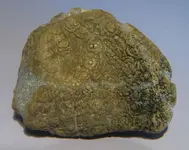
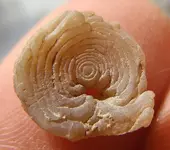
Strictly speaking, that is a breccia and not a conglomerate. The geological difference is that conglomerates are exclusively sedimentary and the clasts within the matrix are largely rounded or sub-rounded. Breccias can be sedimentary, tectonic, landslide/collapse/impact-related or volcanic/igneous in origin and the clasts within the matrix are mainly angular.
That particular clast with the concentric rings is interesting. The most commonly seen mineral with that kind of structure is ‘beekite’, which is a form of microcrystalline quartz that most usually arises by silica replacement of carbonate minerals during fossilization… especially for things like corals.
Beekite can be pretty much any colour, but is usually paler/browner than in your specimen. No easy way to be sure from your pictures, but that would be my guess.


Upvote
3
Solution
tamrock
Platinum Member
Your very welcome, but I was wrong about it being a conglomerate, as it is a breccia as Red-Coat points out. However I do have an interesting piece I consider a conglomerate with copper oxide infused with in it. I picked it up at a copper mine located in what's called the Lisbon Valley in Utah, when I made a visit to the mines Drill and Blast forman.Thank you for taking you’re time to post your thoughts
Attachments
Upvote
2
antmike915
Silver Member
- Joined
- Apr 20, 2020
- Messages
- 3,109
- Reaction score
- 6,805
- Golden Thread
- 0
- Location
- SE Alabama
- Primary Interest:
- Relic Hunting
Nice 👍
Upvote
0
- #8
Thread Owner
Thank you so much, great info!Hi Shimmi99
Strictly speaking, that is a breccia and not a conglomerate. The geological difference is that conglomerates are exclusively sedimentary and the clasts within the matrix are largely rounded or sub-rounded. Breccias can be sedimentary, tectonic, landslide/collapse/impact-related or volcanic/igneous in origin and the clasts within the matrix are mainly angular.
That particular clast with the concentric rings is interesting. The most commonly seen mineral with that kind of structure is ‘beekite’, which is a form of microcrystalline quartz that most usually arises by silica replacement of carbonate minerals during fossilization… especially for things like corals.
Beekite can be pretty much any colour, but is usually paler/browner than in your specimen. No easy way to be sure from your pictures, but that would be my guess.
View attachment 2053615 View attachment 2053616
Upvote
0
- #9
Thread Owner
Hi Shimmi99
Strictly speaking, that is a breccia and not a conglomerate. The geological difference is that conglomerates are exclusively sedimentary and the clasts within the matrix are largely rounded or sub-rounded. Breccias can be sedimentary, tectonic, landslide/collapse/impact-related or volcanic/igneous in origin and the clasts within the matrix are mainly angular.
That particular clast with the concentric rings is interesting. The most commonly seen mineral with that kind of structure is ‘beekite’, which is a form of microcrystalline quartz that most usually arises by silica replacement of carbonate minerals during fossilization… especially for things like corals.
Beekite can be pretty much any colour, but is usually paler/browner than in your specimen. No easy way to be sure from your pictures, but that would be my guess.
View attachment 2053615 View attachment 2053616
Hi Shimmi99
Strictly speaking, that is a breccia and not a conglomerate. The geological difference is that conglomerates are exclusively sedimentary and the clasts within the matrix are largely rounded or sub-rounded. Breccias can be sedimentary, tectonic, landslide/collapse/impact-related or volcanic/igneous in origin and the clasts within the matrix are mainly angular.
That particular clast with the concentric rings is interesting. The most commonly seen mineral with that kind of structure is ‘beekite’, which is a form of microcrystalline quartz that most usually arises by silica replacement of carbonate minerals during fossilization… especially for things like corals.
Beekite can be pretty much any colour, but is usually paler/browner than in your specimen. No easy way to be sure from your pictures, but that would be my guess.
View attachment 2053615 View attachment 2053616
Can I get you’re thoughts on these? PleaseHi Shimmi99
Strictly speaking, that is a breccia and not a conglomerate. The geological difference is that conglomerates are exclusively sedimentary and the clasts within the matrix are largely rounded or sub-rounded. Breccias can be sedimentary, tectonic, landslide/collapse/impact-related or volcanic/igneous in origin and the clasts within the matrix are mainly angular.
That particular clast with the concentric rings is interesting. The most commonly seen mineral with that kind of structure is ‘beekite’, which is a form of microcrystalline quartz that most usually arises by silica replacement of carbonate minerals during fossilization… especially for things like corals.
Beekite can be pretty much any colour, but is usually paler/browner than in your specimen. No easy way to be sure from your pictures, but that would be my guess.
View attachment 2053615 View attachment 2053616
 they are all from same site,is this some sort of olivine serpentine? I have to idea very cool design tho
they are all from same site,is this some sort of olivine serpentine? I have to idea very cool design thoAttachments
-
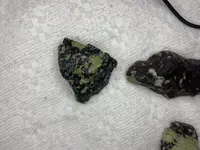 98E1EB8C-054B-4012-B0E7-746C1B7D2E21.webp923.5 KB · Views: 28
98E1EB8C-054B-4012-B0E7-746C1B7D2E21.webp923.5 KB · Views: 28 -
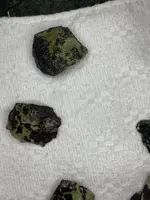 A436F24E-BA96-465F-9C72-DA7E51D42F9A.webp924.3 KB · Views: 28
A436F24E-BA96-465F-9C72-DA7E51D42F9A.webp924.3 KB · Views: 28 -
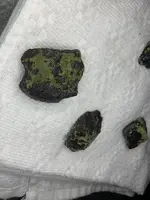 A07168EA-0EFD-4426-A981-FDFBB323C921.webp618.7 KB · Views: 24
A07168EA-0EFD-4426-A981-FDFBB323C921.webp618.7 KB · Views: 24 -
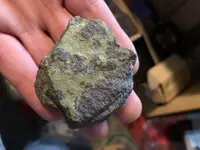 49289C5F-A764-48BF-864F-F6E1E99E53F5.webp1 MB · Views: 27
49289C5F-A764-48BF-864F-F6E1E99E53F5.webp1 MB · Views: 27 -
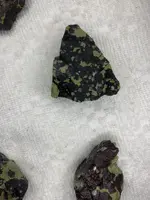 D1731D02-500E-4C39-B432-FDCFF2B7CFFD.webp768.4 KB · Views: 24
D1731D02-500E-4C39-B432-FDCFF2B7CFFD.webp768.4 KB · Views: 24 -
 E02E6591-B8CA-4E5C-A59C-CC4AA1B97B16.webp1 MB · Views: 26
E02E6591-B8CA-4E5C-A59C-CC4AA1B97B16.webp1 MB · Views: 26 -
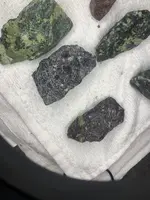 318B4B24-F1C8-446B-A712-E2E7DC67E411.webp1 MB · Views: 24
318B4B24-F1C8-446B-A712-E2E7DC67E411.webp1 MB · Views: 24 -
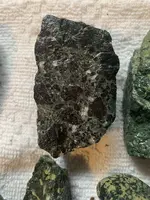 FE6FEE3F-8A74-4801-807B-5A6BAEC744EA.webp921.6 KB · Views: 26
FE6FEE3F-8A74-4801-807B-5A6BAEC744EA.webp921.6 KB · Views: 26 -
 71FBBBDA-AB98-4F2F-AFA5-C7739241634D.webp815.9 KB · Views: 26
71FBBBDA-AB98-4F2F-AFA5-C7739241634D.webp815.9 KB · Views: 26 -
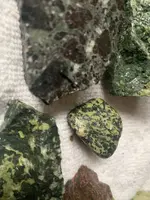 B491D4E9-BA77-4D33-9055-77D0BF8D4FB5.webp810.5 KB · Views: 26
B491D4E9-BA77-4D33-9055-77D0BF8D4FB5.webp810.5 KB · Views: 26 -
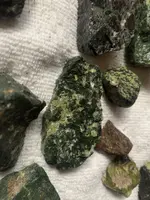 C8A9F914-B9F1-4915-8188-553A243D9197.webp1.2 MB · Views: 26
C8A9F914-B9F1-4915-8188-553A243D9197.webp1.2 MB · Views: 26 -
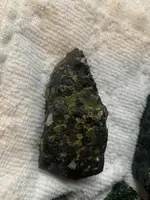 42229387-9931-459A-B85F-B37D94BEDB04.webp853.6 KB · Views: 26
42229387-9931-459A-B85F-B37D94BEDB04.webp853.6 KB · Views: 26 -
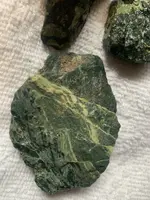 FF1A3730-BC63-4B3F-B990-B8399EE7C7A5.webp803.5 KB · Views: 25
FF1A3730-BC63-4B3F-B990-B8399EE7C7A5.webp803.5 KB · Views: 25 -
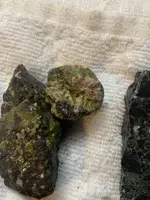 A3B6D08C-E24F-4761-9AA6-9657D8B975D5.webp765.8 KB · Views: 27
A3B6D08C-E24F-4761-9AA6-9657D8B975D5.webp765.8 KB · Views: 27
Upvote
0
- Joined
- Dec 23, 2019
- Messages
- 6,340
- Reaction score
- 20,229
- Golden Thread
- 0
- Location
- Surrey, UK
- Primary Interest:
- All Treasure Hunting
Several of those look to be serpentinites, for which brecciation is not uncommon.
Upvote
3
- #12
Thread Owner
The small ones are beautiful microcrystallineObsidian? Found this in forested area no civilization or industry for 80miles light passes threw these.
Attachments
-
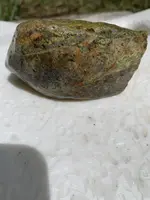 69E96F8D-ABB3-494A-82C6-370726BFFBFB.webp855.4 KB · Views: 21
69E96F8D-ABB3-494A-82C6-370726BFFBFB.webp855.4 KB · Views: 21 -
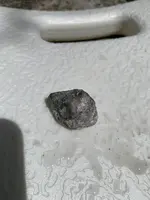 023AE311-44FB-4AD9-9701-BBEB6AA4799D.webp481.8 KB · Views: 21
023AE311-44FB-4AD9-9701-BBEB6AA4799D.webp481.8 KB · Views: 21 -
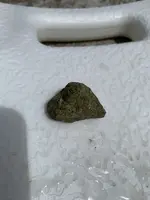 25D64295-14FA-42C4-AA56-227B83E16E52.webp372.9 KB · Views: 20
25D64295-14FA-42C4-AA56-227B83E16E52.webp372.9 KB · Views: 20 -
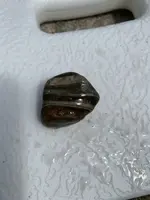 FB7DD086-1A8A-4116-9003-A741D94201B3.webp395.2 KB · Views: 17
FB7DD086-1A8A-4116-9003-A741D94201B3.webp395.2 KB · Views: 17 -
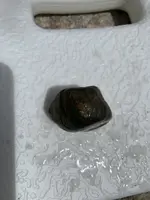 4DDD2C1B-E4F3-478C-AAFA-B37495F8C04F.webp417.8 KB · Views: 17
4DDD2C1B-E4F3-478C-AAFA-B37495F8C04F.webp417.8 KB · Views: 17 -
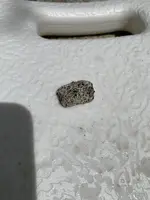 B9A9DB7F-7FFF-4AA4-BDAC-2A9C569A5C58.webp456.7 KB · Views: 17
B9A9DB7F-7FFF-4AA4-BDAC-2A9C569A5C58.webp456.7 KB · Views: 17 -
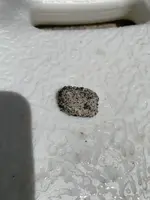 19CCBD83-954C-40FE-B466-5A56A2311AE1.webp473.8 KB · Views: 18
19CCBD83-954C-40FE-B466-5A56A2311AE1.webp473.8 KB · Views: 18 -
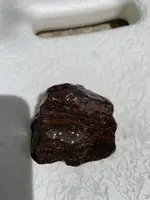 6BC4C8B5-FFC1-43FE-9BD7-FAD4740945B2.webp483.3 KB · Views: 18
6BC4C8B5-FFC1-43FE-9BD7-FAD4740945B2.webp483.3 KB · Views: 18 -
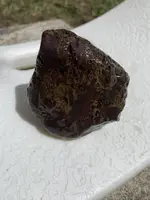 1350ADFF-70FB-4257-8FAB-B97A11B161B9.webp632.1 KB · Views: 18
1350ADFF-70FB-4257-8FAB-B97A11B161B9.webp632.1 KB · Views: 18 -
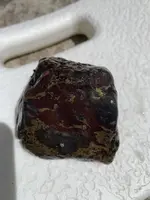 2C30ACA9-F001-480F-AC29-2C1CFBAFBE73.webp653.9 KB · Views: 18
2C30ACA9-F001-480F-AC29-2C1CFBAFBE73.webp653.9 KB · Views: 18 -
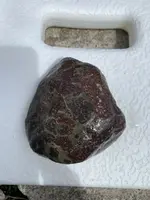 FAD94AC9-9D4E-44B1-AEFC-C4EE646227AA.webp817.5 KB · Views: 15
FAD94AC9-9D4E-44B1-AEFC-C4EE646227AA.webp817.5 KB · Views: 15 -
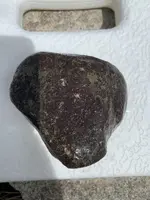 A825B88F-3976-47DC-AFF6-9621D9C37AA3.webp983.9 KB · Views: 17
A825B88F-3976-47DC-AFF6-9621D9C37AA3.webp983.9 KB · Views: 17 -
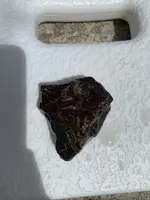 3261194C-8067-44CD-A5C4-2DFA91A61544.webp561.4 KB · Views: 17
3261194C-8067-44CD-A5C4-2DFA91A61544.webp561.4 KB · Views: 17 -
 CA978756-C8C9-44E7-B3C3-C91EC4CD8717.webp536.9 KB · Views: 15
CA978756-C8C9-44E7-B3C3-C91EC4CD8717.webp536.9 KB · Views: 15 -
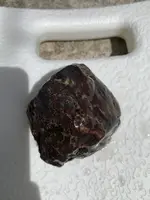 91492E05-526C-4D79-8A3C-036EDD894633.webp546.7 KB · Views: 18
91492E05-526C-4D79-8A3C-036EDD894633.webp546.7 KB · Views: 18 -
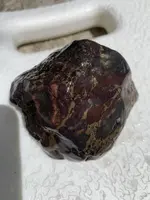 35431283-3D4F-4447-A0F7-44100F274503.webp743.6 KB · Views: 16
35431283-3D4F-4447-A0F7-44100F274503.webp743.6 KB · Views: 16 -
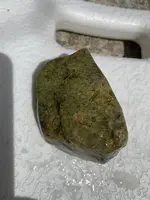 CA8C9631-94B3-41BB-97D5-F3435987A304.webp702.7 KB · Views: 15
CA8C9631-94B3-41BB-97D5-F3435987A304.webp702.7 KB · Views: 15 -
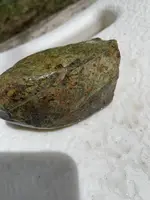 F01B122C-6DB6-4067-8F69-5E6107D43650.webp708.2 KB · Views: 16
F01B122C-6DB6-4067-8F69-5E6107D43650.webp708.2 KB · Views: 16 -
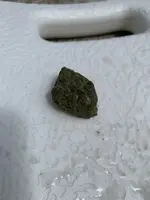 62DC6B38-5A6F-4A29-9380-3FEC6BD641F5.webp330.3 KB · Views: 16
62DC6B38-5A6F-4A29-9380-3FEC6BD641F5.webp330.3 KB · Views: 16
Upvote
0
Similar threads
- Question
- Replies
- 17
- Views
- 369
Users who are viewing this thread
Total: 1 (members: 0, guests: 1)
Latest Discussions
-
-
Axe and Celt found in close proximity the same day
- Latest: Tesorodeoro
-
-



